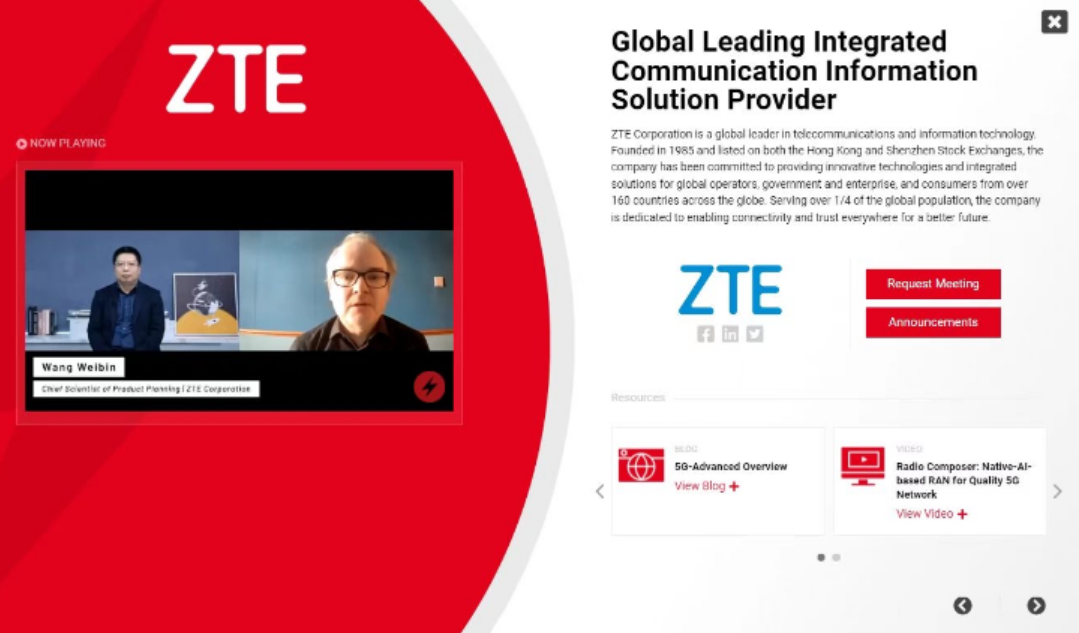ZTE Proposes “Customer-Centric" Meta Core
Time:2023-03-03

Q1: With 30 years of development from 2G to 5G, Will the mobile networks, especially core network need further evolution? What are the driving forces?
Bridging the digital divide, enabling digital transformation of society and providing indistinguishable experience between virtual and real world has become the new missions of the mobile network, which are driving it to keep evolving with higher efficiency to save resource as much as possible, enhanced capabilities to increase the current experience as much as possible and wider extension of service scope to transform for new business chance.
Core network, regarded as the brain of the network is facing three similar challenges:
1. How to accommodate network access and seamless mobility for anyone or anything, at any time, in any location (no matter in you are in remote mountain areas, the sky or even over the ocean).
2. Current new services like XR are pursuing reality-same experience, and services for machines like Computer vision request stricter communication beyond human perception, which require the core network to be enhanced further .beyond these, the network should provide sensing and computing services as well as traditional connection services.
3. In the digital world, different industries or customer have diverse requirements and scenarios. Core network should provide customized services for different efficiency, reliability and deployment agility requirement.
ZTE believes that the core network will continue to evolve towards a "customer-centric network", and will change the traditional connection-centric mode to provide "exclusive" services for each different users or scenarios in the next decade.
Q2: What are the new features of the "user-centric" core network design concept in the future?
Aiming to deliver exclusive services to each different customer, including massive or vertical users, developers and cooperators, the future core network should have three features:
The first one is on-demand access:
Aiming to deliver exclusive services to each different customer, including massive or vertical users, developers and cooperators, the future core network should have three features:
The first one is on-demand access:
The future core network should provide any type of connection and seamless mobility control. With automatic service discovery and collaboration between sub nets and public networks, users can select any access modes depend on their different terminals,access locations and time.
The second one is on-demand deployment:
From being cloud in scaled data center to being hybrid with distributed dedicated boards or chips, the core network will be easily deployed even on satellites, drones and vehicle-mounted devices in plug-and-play mode.
The third one is on-demand services and capabilities:
The future core should provide decoupled and Packaged Business Capabilities (PBC), which will be easy of use, composible as plug-ins and delivered in real time for customers.
Based on the 3 feature requirements, ZTE is developing the Meta-Core, a "customer-centric" core network, which innovatively provides a self-serving online shop, providing customized services and different distributed deployment sites from mini-node as pizza box or even a chip in satellite to telco cloud in central DC.
Q3: What are the key technologies to implement the three new features of the core network in the future?
The Meta Core introduces several key advanced technologies, including distributed inter sub-network connection architecture, computing and network convergent infrastructure, and AI native network.
Distributed heterogeneous sub network interconnection architecture can push the network closer to users with lower latency and higher reliability. In addition, with distributed core networks and automatic discovery, deletion and interconnection with each other, the network can be dynamically shaped itself, and resource could be coordinated and scheduled intelligently as required.
Storage, computing and network convergence infrastructure with the programmable hardware and integration of them can break through the performance bottleneck of virtualization, guarantee flexibility and cost efficiency simultaneously. As a new platform with multiple capabilities, the Meta Core provides users with integrated multiple services such as diversified computing power, computing power with perceptional routing and even video rendering etc.
With AI native, the Meta Core can not only satisfy customer’s intent driven maintenance of network, but also provides complete AI services for 3rd party such as data collection and processing, AI model training and reasoning, and model evaluation.
ZTE is engaged with operators and industry partners to build a future core network, promoting network evolution and society development.

